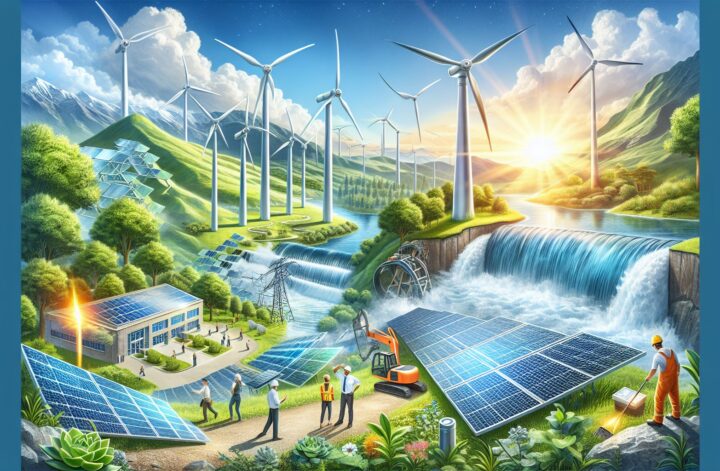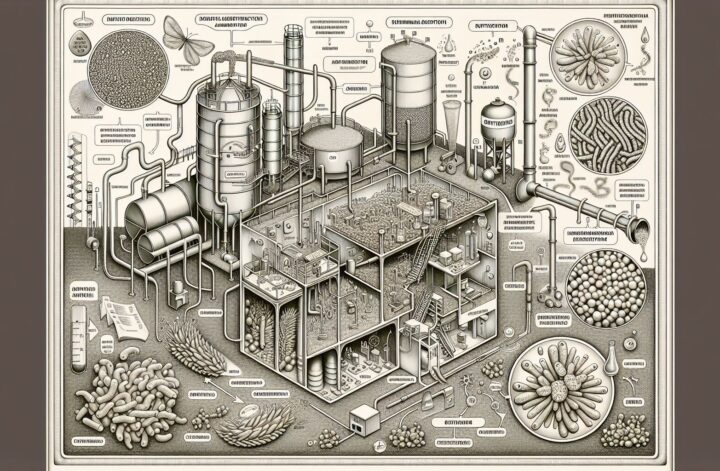In our modern age, the dilemma of energy production looms large. As the population grows and our reliance on electronic devices increases, finding efficient and sustainable methods of energy production has become a priority. At the forefront of potential solutions is one course of technology, inextricably tied with the natural world: Renewable Energy[^1^]. Our focus for this discussion will be the facets of renewable energy, its benefits and disadvantages, and why it is an important option for a sustainable future.
Defining Renewable Energy
Renewable energy involves getting energy from sources that are naturally replenished on a human timescale. These sources include sunlight, wind, rain, tidal flows, geothermal heat, and other types of biomass. These sources are renewable in that they are not exhaustible, unlike fossil fuels like coal and natural gas.
Renewable Energy Sources
There are several types of renewable energy sources available today:
-
Solar Energy: Perhaps the most well-known, this involves harnessing the power of the sun through photovoltaic cells or concentrated solar power systems. These systems convert sunlight into electricity that can be used directly or stored for later use.
-
Wind Energy: Wind power involves the use of wind turbines to convert the kinetic energy in wind into mechanical power, and ultimately, into electricity.
-
Hydroelectric Energy: This type of energy is generated from the movement of water through turbines. It’s a dependable source of energy as long as there is water flow and it can also be stored in reservoirs to be used when needed.
-
Biomass Energy: Energy derived from organic material in plants and animals. Modern technology has made it possible to convert these biomasses into forms of energy like heat, electricity and fuel.
-
Geothermal Energy: This type of energy comes from the heat within the earth. Geothermal power plants produce electricity by tapping into the earth’s internal heat.
Benefits of Renewable Energy
-
Sustainability: Renewable energy is derived from natural sources that are self-replenishing within our established environment, ensuring a sustainable supply devoid of depletion.
-
Reduced Greenhouse Gas Emissions: By substituting fossil fuels with renewable energy sources, we reduce the degree of greenhouse gas emissions, thereby mitigating our contribution to climate change. This makes renewable energy crucial in efforts to combat global warming[^2^].
-
Locally Available: Natural elements such as sunlight and wind are globally available, thus disallowing issues of supply and demand, often resulting in lower energy costs.
-
Creation of Jobs: The renewable energy sector consistently generates jobs, supporting local and countrywide economy growth.
-
Energy Security: By diversifying our energy mix, we decrease dependency on particular energy sources and thus decrease the risk of energy supply disruptions.
Despite these evident advantages of renewable energy, it’s important to also consider some of its drawbacks.
Drawbacks of Renewable Energy
-
Intermittency: While renewable energy sources are consistent over time, they may not always be available. For instance, solar power is dependent on sunshine, and wind power on wind speed. This variability can lead to challenges in power supply reliability.
-
Cost: The upfront investment for renewable energy technologies can be high, and while many areas have established policies to incentivize renewable energy, these initial costs can still make renewable energy sources inaccessible for some.
-
Geographical Limitations: Some renewable energy technologies are location-dependent. For example, hydroelectric power plants require a suitable source of flowing water.
-
Impact on Wildlife: Particularly for wind and hydroelectric power, there can be significant impacts on local ecosystems and wildlife[^3^].
The Future of Renewable Energy
Though these challenges exist, they don’t overshadow the critical role that renewable energy must play in our future. As development progresses, more efficient and reliable solutions to these drawbacks are expected to emerge. The crossroad of technology and environmental consciousness has paved the way for innovations that promise a better future. The field of renewable energy is changing and expanding rapidly, and as demand for sustainable energy sources continues to rise, so too will investments in renewable energy infrastructure.
Conclusion
Our society is increasingly recognizing the need for renewable, sustainable sources of energy. Technological advancements have led to the development of renewable energy resources, and while challenges remain, the benefits outweigh the disadvantages. As society at large continues to realize this, we can hopefully look forward to a future powered by sustainable, clean, and renewable energy sources.
[^1^]: Office of Energy Efficiency & Renewable Energy, “Renewable Energy Explained,” U.S. Department of Energy, 2020. [Online]. Available: https://www.energy.gov/eere/education/downloads/renewable-energy-explained.
[^2^]: IPCC, “Climate Change 2014: Synthesis Report,” 2014. [Online]. Available: https://www.ipcc.ch/report/ar5/syr/.
[^3^]: B.G Sovacool et al., “Environmental issues for wind and solar power technologies: what are the barriers?”, Renewable Energy, vol. 92, pp. 909-921, 2016.




